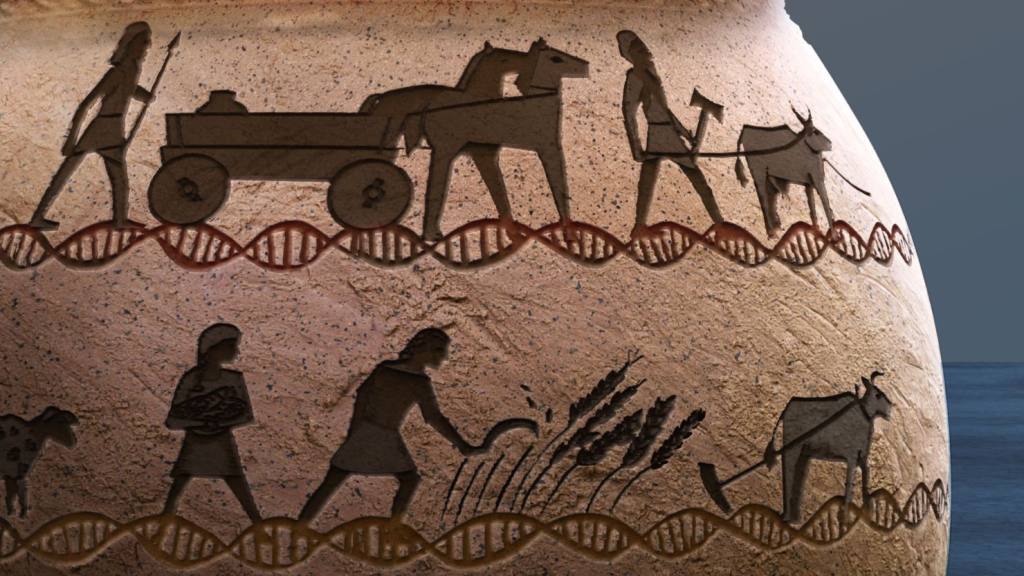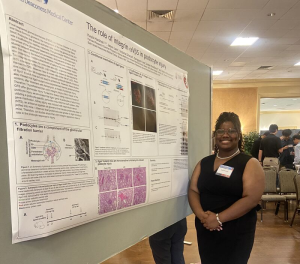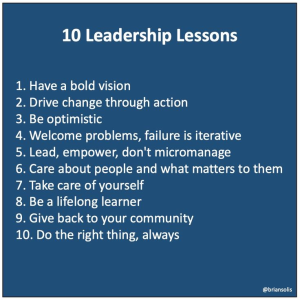Ancient DNA research is revolutionizing our understanding of human history and has garnered attention for its ability to unlock secrets from the past. This innovative field, led by experts such as Christina Warinner, combines cutting-edge paleogenomics with archaeological discoveries to explore ancient civilizations like the Maya. By analyzing genetic material from excavated remains, researchers can reconstruct diets and health practices, shedding light on how these societies functioned thousands of years ago. Despite facing recent funding cuts, the promise of ancient DNA studies continues to entice scientists seeking answers to profound questions about our ancestors. As technology advances, the potential for exciting new revelations in ancient DNA research grows exponentially, offering a window into the lives of our forebears and their interactions.
The exploration of genetic material from ancient organisms offers invaluable insights into early human life and culture. Often referred to as genetic archaeology, this field enables scientists to piece together the puzzles surrounding ancient populations and their practices. Renowned for her contributions, Christina Warinner champions the use of paleogenomics in unraveling the complexities of historic diets and communities, particularly those of the Maya civilization. As researchers delve deeper into archaeological findings, they unlock narratives that were once thought lost to time. With each breakthrough, the significance of this scientific discipline becomes increasingly clear, revealing the rich tapestry of human history through the lens of our genetic heritage.
The Importance of Ancient DNA Research
Ancient DNA research, spearheaded by experts like Christina Warinner, is a crucial field that reveals invaluable insights into human history and evolution. By analyzing the genetic material from ancient remains, researchers are uncovering details about early diets, health, and migration patterns. This growing discipline, known as paleogenomics, not only sheds light on how ancient populations lived but also enhances our understanding of contemporary genetic diversity and health issues. With advancements in sequencing technologies, scientists can now retrieve and interpret DNA from climates previously thought to be too challenging, thereby expanding the potential for groundbreaking discoveries.
In her work, Warinner highlights the profound implications of ancient DNA studies on our comprehension of human societies, particularly those like the Maya civilization. Her research aims to connect genetic data with archaeological findings, emphasizing the role of social networks in shaping historical narratives. By reconstructing the relationships between communities through their genetic material, ancient DNA research helps paint a more complete picture of how these societies functioned, contributed to human history, and adapted to their environments over millennia.
The Role of Christina Warinner in Paleogenomics
Christina Warinner stands at the forefront of ancient DNA research, pushing the boundaries of what is possible within the field of paleogenomics. Her work has not only contributed significantly to our understanding of ancient societies but has also revived interest in the importance of archaeological discoveries. Warinner’s insights into the diets and health of ancient populations have crucial implications for current food systems and our understanding of human evolution. As she navigates the challenges posed by funding cuts, her commitment to the research highlights the resilience and significance of the discipline in answering foundational questions about humanity’s past.
Warinner’s innovative approaches, particularly in extracting DNA from ancient residues, have set her apart in the field. Her projects, including the ongoing inquiry into ancient Maya societies, demonstrate her dedication to interdisciplinary collaboration, merging techniques from genetics, archaeology, and history. By examining genetic relationships among ancient populations, Warinner is addressing complex questions about how social structures influenced the development of civilizations such as the Maya, revealing a rich tapestry of interactions that defined their historical legacies.
Challenges Facing Ancient DNA Research Funding
Despite the immense potential of ancient DNA research to enrich our understanding of human history, funding cuts present significant hurdles for dedicated researchers like Christina Warinner. The unfortunate aspect of diminishing federal support is that many promising projects, particularly those focusing on breakthrough archaeological discoveries, are now at risk. Warinner’s experience with losing key grants underscores a critical moment for American archaeologists who have historically been leaders in the field. Without adequate financial backing, the progress made in uncovering ancient human narratives could stagnate.
The current climate of funding challenges emphasizes the need for advocacy in supporting scientific research that delves deep into our past. Warinner articulates the importance of this work, not only for academic comprehension but for fueling public curiosity about our origins. Engaged citizens and researchers must rally together to ensure that government bodies recognize the value of studies like hers. The stories and insights derived from ancient DNA research are fundamental in understanding who we are today, making it imperative that we protect and promote these significant explorations.
Technological Advances in Ancient DNA Analysis
Technological advances have revolutionized the field of ancient DNA analysis, enabling scientists like Christina Warinner to achieve unprecedented levels of accuracy and detail in their research. With improved sequencing techniques and computational power, researchers can now extract and analyze genetic material from increasingly degraded samples found in archaeological sites. This technological leap allows for the reconstruction of entire genomes from ancient populations, a feat that was nearly impossible just a decade ago, and it drastically enhances the potential findings of ancient DNA studies.
Moreover, these advancements are coupled with innovative methods such as remote sensing, which has played a key role in the discovery of new archaeological sites linked to ancient civilizations. Warinner’s projects, specifically focused on the Maya civilization, benefit greatly from these exchanges between technology and traditional archaeological methodologies. Together, they provide crucial insights into the social dynamics and interconnectedness of ancient communities by linking genetic findings to the geographical and cultural contexts of their times.
Interdisciplinary Approaches in Archaeological Discoveries
The integration of various disciplines is essential in the quest for understanding ancient civilizations, and Christina Warinner exemplifies this interdisciplinary approach in her research. By partnering with geneticists, archaeologists, and anthropologists, Warinner’s work on ancient DNA helps illuminate the intricate web of human interaction in societies such as the Maya. This collaborative effort not only enriches the research but also creates a holistic view of how historical events, environmental factors, and cultural practices have shaped communities across different eras.
Erasing the boundaries between scientific disciplines enables researchers to glean a richer understanding of the complexities of ancient human societies. Warinner’s inquiry into the role of marriage and kinship networks in enhancing political ties among the Maya demonstrates the power of an interdisciplinary lens. This approach not only advances archaeological discoveries but also brings to light the relevance of ancient practices in informing contemporary societal structures and relationships.
Implications of Ancient DNA Findings on Modern Health
The findings from ancient DNA research have profound implications for understanding modern health issues and genetics. Christina Warinner’s studies contribute valuable insights into the nutritional evolution of humans, including the dynamics of diet and health through history. By analyzing ancient dietary practices through genetic data, researchers can assess how certain dietary components have influenced modern human health. This data bridges the gap between past and present, showing how ancient human adaptations to food sources correlate with current health conditions.
For instance, Warinner’s examination of lactose intolerance links ancient dairy consumption patterns to present-day populations that still struggle with digesting milk. These connections can inform nutritional advice and public health strategies aimed at addressing dietary-related health issues. By fostering a better understanding of historical food practices and their genetic implications, ancient DNA research can aid in developing better health interventions tailored to specific populations, showcasing the relevance of this research to current societal needs.
Building Public Interest in Ancient DNA Research
Creating public interest in ancient DNA research is vital for securing ongoing support and funding for studies that uncover crucial aspects of our history. Christina Warinner emphasizes the importance of making this research relevant to the broader public. By highlighting the ways that ancient DNA connects individuals with their ancestry and elucidates significant historical events, researchers can invoke curiosity and pride in our shared heritage. Engaging public interest can foster greater understanding and appreciation of how ancient civilizations have shaped modern society.
Moreover, leveraging platforms such as social media, community lectures, and educational outreach can help demystify the complexities of ancient DNA research. By sharing findings in accessible ways, researchers like Warinner can inspire a new generation of scientists and historians interested in digging deeper into humanity’s past. This collective enthusiasm can galvanize funding bodies and policy-makers to prioritize ancient DNA studies, thereby ensuring that valuable scientific inquiries continue to thrive and contribute to our understanding of human history.
Future of Ancient DNA Research in the U.S.
The future of ancient DNA research in the United States hangs in a delicate balance, particularly in light of recent funding challenges faced by researchers like Christina Warinner. As support for scientific studies wanes, American scientists risk losing their groundbreaking contributions to the field, potentially ceding leadership to researchers in more supportive environments like Europe. To revitalize this field, it is essential for the U.S. to rebalance its funding priorities, recognizing the importance of ancient DNA studies in the broader context of scientific inquiry and historical understanding.
Looking ahead, the prospects for ancient DNA research are promising if proactive steps are taken to secure funding and foster collaboration. Emphasizing the interdisciplinary nature of this research could appeal to diverse funding sources ranging from government agencies to private foundations. By advocating for the urgent need to understand our past through the lens of ancient DNA, researchers can push for a resurgence in public interest and financial support, ultimately ensuring that the field continues to evolve and expand.
Ethical Considerations in Ancient DNA Research
As the field of ancient DNA research progresses, so too do the ethical considerations surrounding the study of genetic material from ancient remains. Christina Warinner’s work highlights the need for sensitivity when dealing with ancestral human DNA, particularly in ensuring that modern descendants have a voice in the research process. Ethical practices demand that researchers engage with Indigenous communities and other stakeholders when reconstructing historical narratives from ancient DNA, respecting their rights and perspectives.
Furthermore, as the implications of genetic research extend into contemporary ethical debates regarding consent and ownership of genetic data, it is crucial for scientists to navigate these issues thoughtfully. These discussions not only concern the legacy of archaeological findings but also inform how current genetic research could affect future generations. As Warinner and her colleagues continue to pioneer work in ancient DNA, upholding ethical standards will be vital in maintaining the trust of the communities they study, ultimately enriching the findings and the impact of their research.
Frequently Asked Questions
What is ancient DNA research and why is it important?
Ancient DNA research involves the analysis of genetic material recovered from archaeological remains, providing insights into the genomes of extinct species and ancient human populations. This field, which has gained prominence thanks to scientists like Christina Warinner, is crucial for understanding historical human health, diet, and migration patterns. By uncovering ancient DNA, researchers can reconstruct our evolutionary history and understand how ancient civilizations, such as the Maya civilization, interacted with their environments.
Who is Christina Warinner and what contributions has she made to ancient DNA research?
Christina Warinner is a leading expert in ancient DNA research, recognized for her groundbreaking work in paleogenomics. Her contributions have unveiled important details about ancient diets and the spread of diseases, significantly advancing our knowledge of human history. Warinner’s studies focus on how ancient populations, including the Maya civilization, interacted within their ecosystems and between each other, employing innovative lab techniques to successfully extract and analyze ancient DNA from archaeological sites.
How has ancient DNA research impacted our understanding of the Maya civilization?
Ancient DNA research has revolutionized our understanding of the Maya civilization by providing genetic insights that complement archaeological findings. Researchers, including Christina Warinner, have extracted DNA from individuals inhabiting the Belize River Valley, revealing complex kinship networks and migration patterns. This genetic data helps illuminate the political and social structures of ancient Maya kingdoms, allowing us to better understand how these societies functioned and interacted.
What recent advancements have facilitated breakthroughs in ancient DNA analysis?
Recent advancements in genomic sequencing technologies and computational methods have greatly enhanced the study of ancient DNA. These innovations allow scientists to successfully extract genetic material from deteriorated samples in hot and humid environments, which was previously very challenging. Researchers like Christina Warinner have utilized these technologies to analyze DNA from ancient populations, leading to significant discoveries in human history and dietary practices that were not possible before.
What challenges does ancient DNA research currently face?
Ancient DNA research, despite its rapid advancements, faces significant challenges, especially regarding funding. Recent cuts to federal grants, as noted by experts like Christina Warinner, threaten ongoing projects that aim to uncover insights about historical civilizations and human evolution. The emerging nature of this scientific field requires sustained investment in innovative research to continue unlocking the mysteries of our past through ancient DNA.
What insights about ancient diets can be gained from studying ancient DNA?
Studying ancient DNA allows researchers to identify the dietary habits and nutritional practices of ancient populations. Christina Warinner’s work has demonstrated how DNA from dental tartar can reveal information about the consumption of specific foods, such as dairy products like koumiss. Understanding ancient diets provides crucial context for human adaptation, health, and nutritional changes throughout history, thereby contributing to our knowledge of how early humans interacted with their environment.
How does ancient DNA research connect to our present understanding of human health?
Ancient DNA research offers invaluable insights into the evolutionary history of diseases and health conditions. By analyzing genetic material from ancient populations, researchers can trace the origins and mutations of pathogens, helping us understand modern diseases’ evolution. Experts like Christina Warinner emphasize the importance of this research for appreciating how historical human health issues have shaped current public health challenges, thus providing a bridge between the past and present medical knowledge.
| Key Points | Details |
|---|---|
| Funding Cuts | Recent federal funding cuts have affected over 1,600 NSF grants, including key projects in ancient DNA research. |
| Christina Warinner | Warinner is an expert in ancient DNA and innovator in methods that uncover information about early human health and diets. |
| Importance of Ancient DNA Research | This field helps us understand human history and evolution, revealing how early humans lived and interacted. |
| Recent Advancements | Innovations in lab techniques and computing power have led to rapid advancements in ancient DNA studies. |
| Case Study: Maya Civilization | Warinner’s research in Belize aims to decode the social structures and interactions of ancient Maya using genomic data. |
| Future Research Directions | Warinner seeks to explore the origins of horse milking and its role in human history, but faces funding challenges. |
Summary
Ancient DNA research is crucial for reconstructing the narrative of human history, revealing insights into our ancestors’ lives and interactions. The recent funding cuts threaten the progress made in this important field, especially at a time when significant advances in technology allow for deeper explorations into ancient human diets and health. Researchers like Christina Warinner highlight the vital connection between ancient DNA and modern understanding, showcasing how this research not only satisfies human curiosity about our origins but also informs current societal knowledge.




